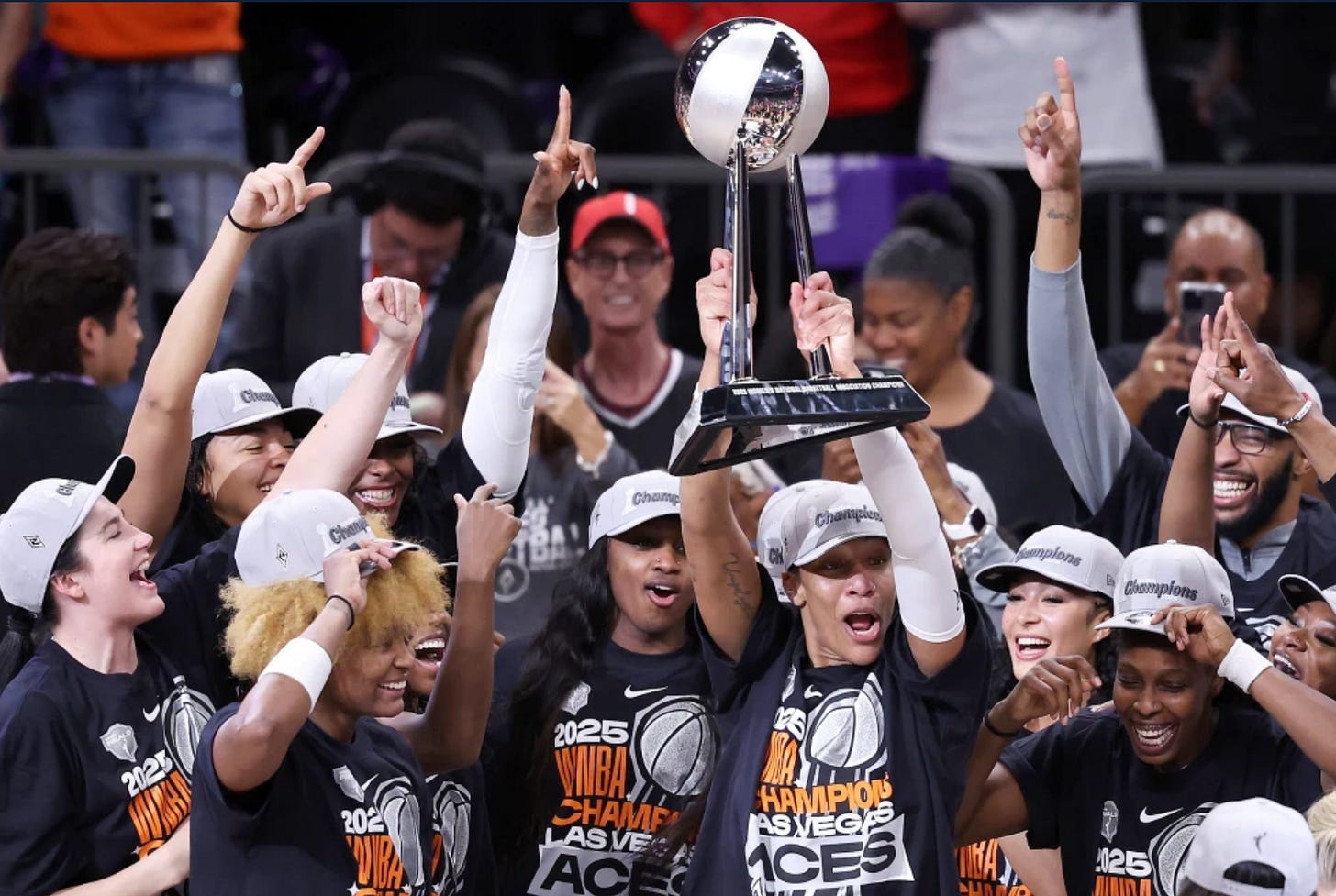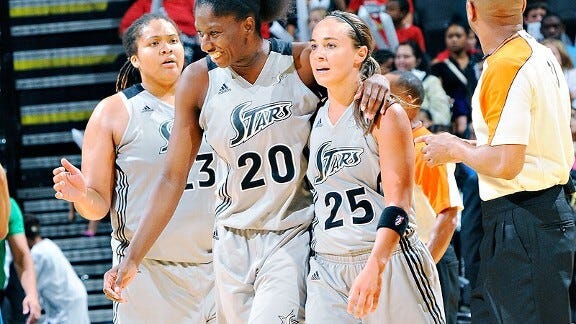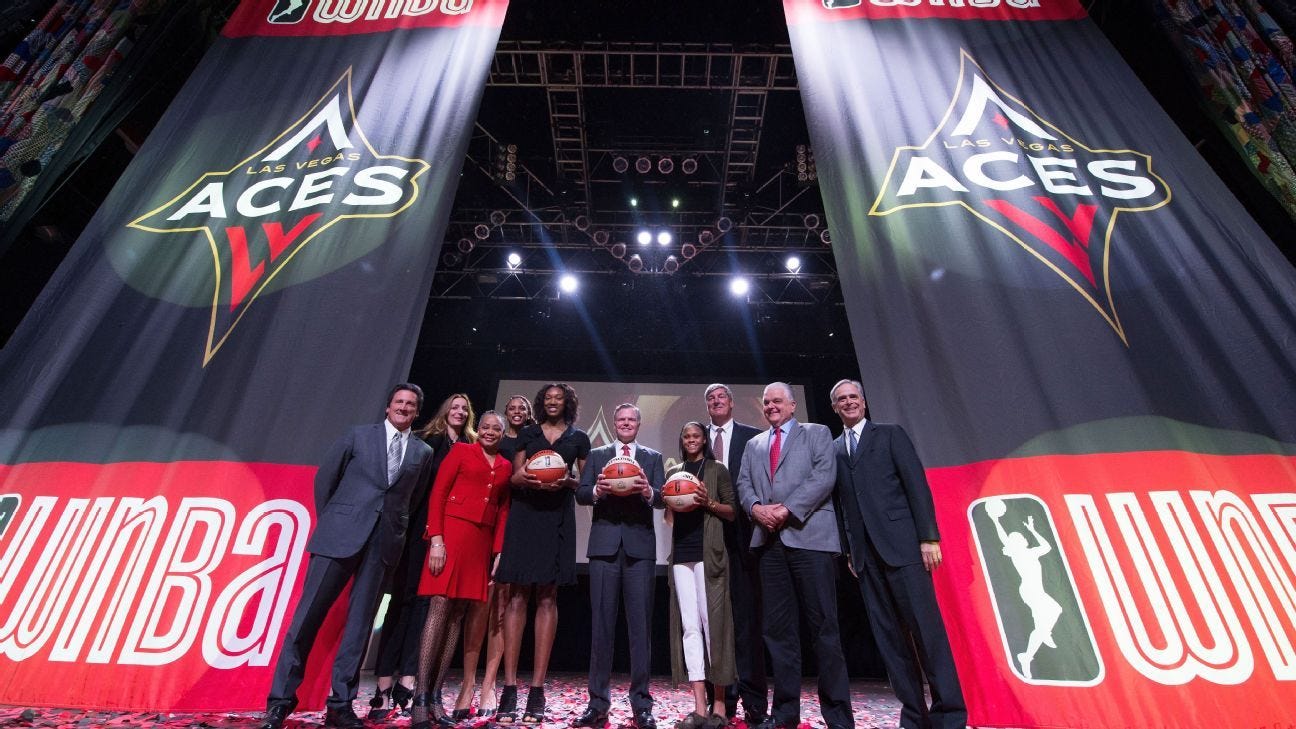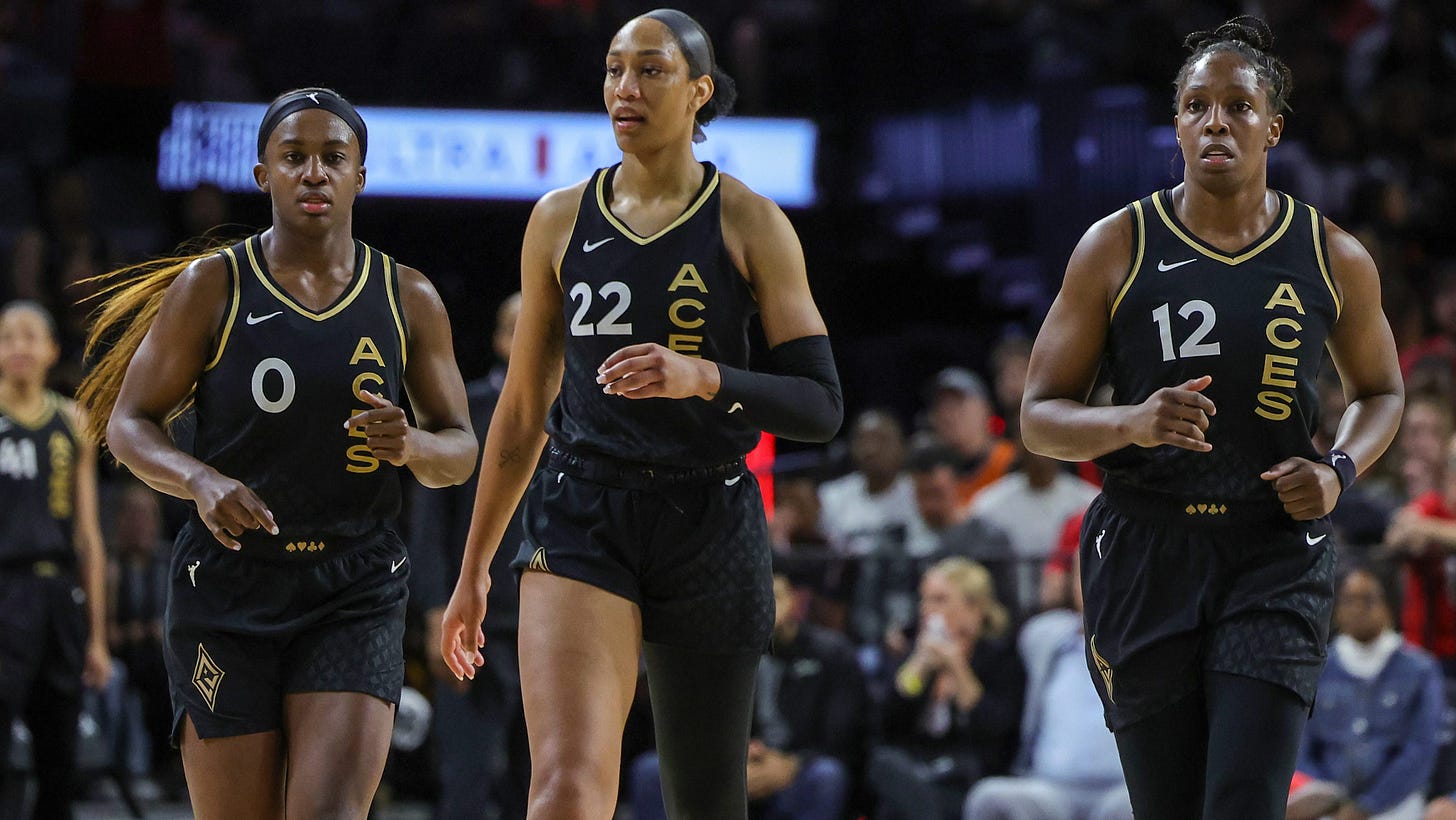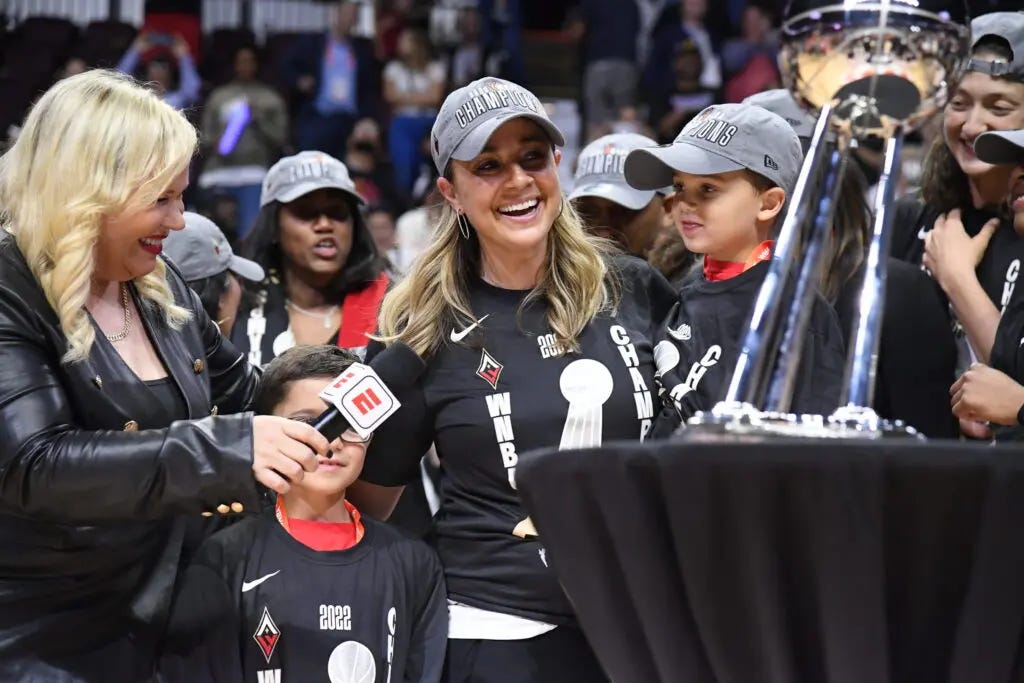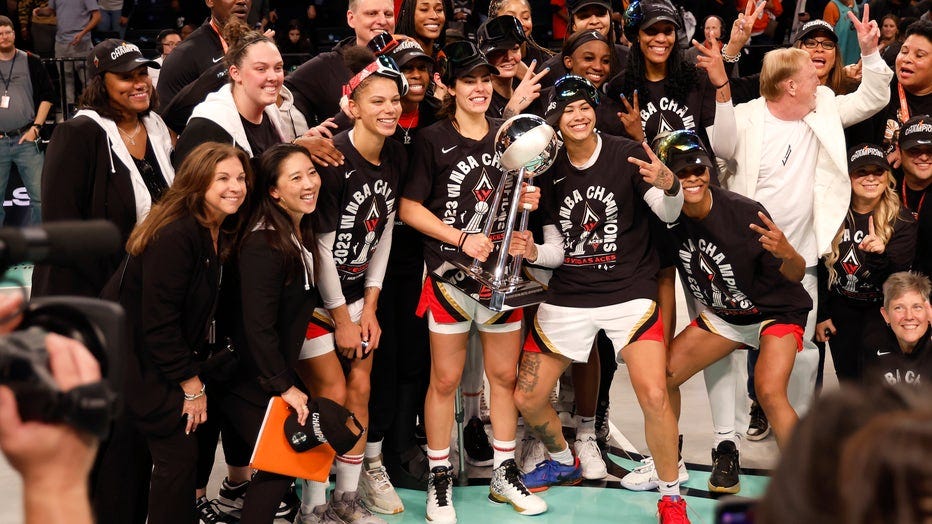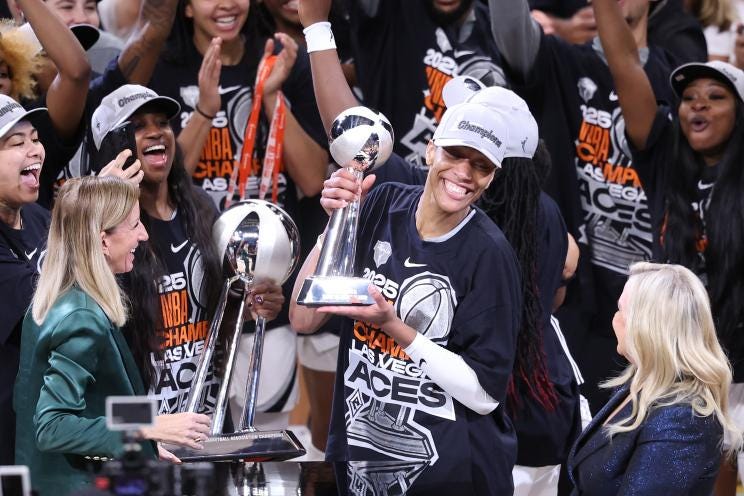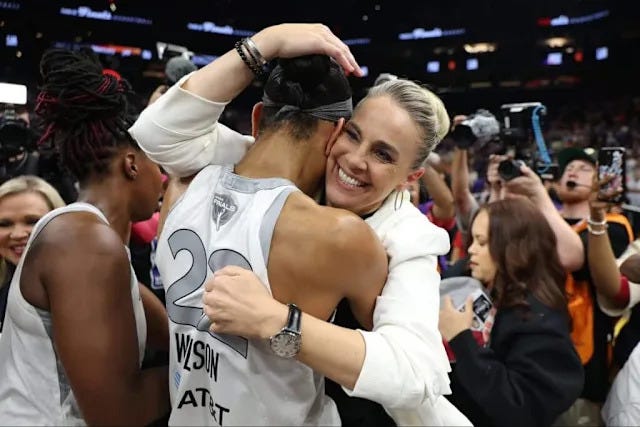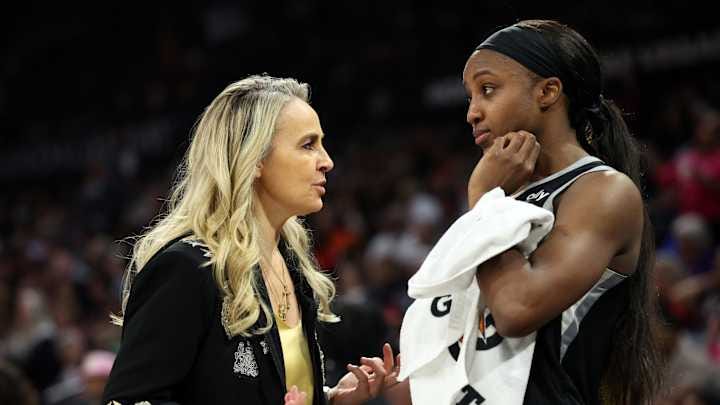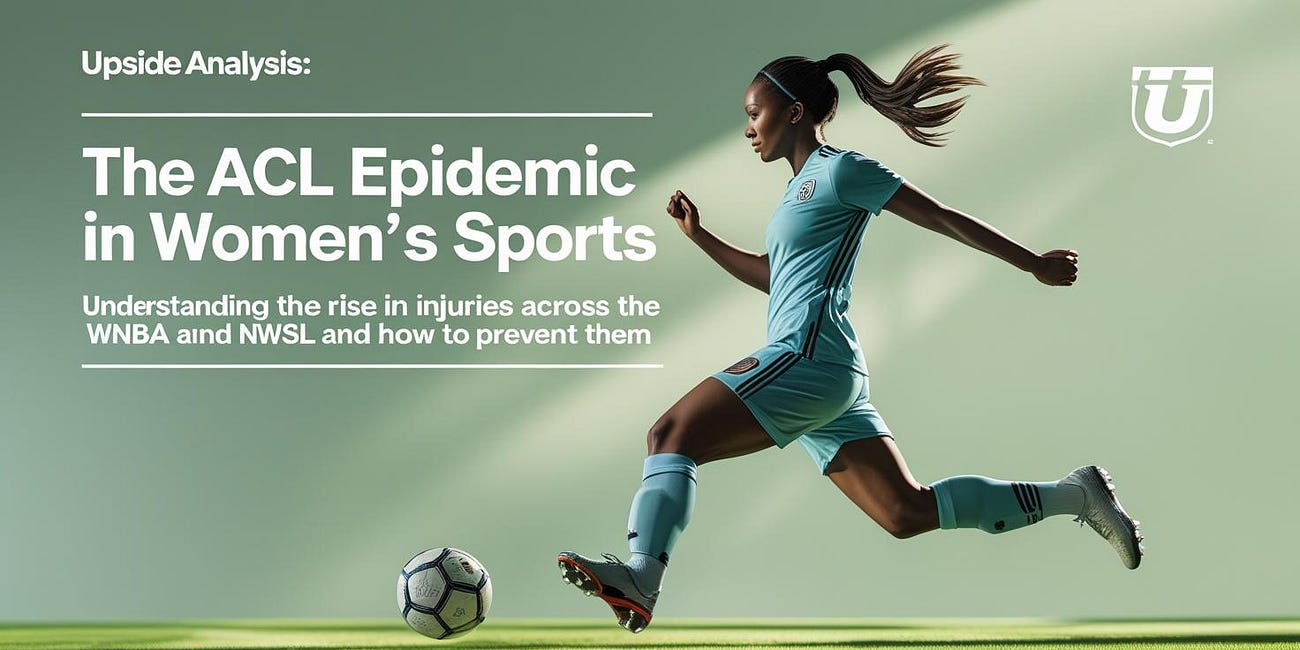🏀 Upside Special Report: Champions by Design: How the Aces Redefined Excellence in Women’s Basketball
Yesterday the Las Vegas Aces (WNBA) won their 3rd WNBA title in 4 years. The Las Vegas Aces’ 2025 championship run is more than a title win — it’s proof that in the modern WNBA, sustained success is built on stacking advantage across every quadrant: star power, culture, depth, and behind-the-scenes excellence. Winning four decades ago or even five years ago could rest largely on on-court talent and coaching; in 2025, a championship is as much a test of systems, science, recovery, and infrastructure as it is of Xs and Os. As the Aces claim their third title in four seasons, their rise is a case study in holistic excellence. This analysis traces how a franchise once perennially average transformed into a powerhouse — and how a relatively new performance and medical leadership structure is a critical piece of the puzzle.
History of the Las Vegas Aces
To see how far the Aces have come, it helps to sketch out the franchise’s journey:
The organization began as the Utah Starzz, one of the original WNBA franchises in 1997.
In 2003, the team relocated to San Antonio, where they became the Silver Stars / Stars, with spotty success and occasional playoff runs but no championships.
In 2018, the franchise moved to Las Vegas and rebranded as the Aces.
In the early years in Vegas, the team gradually rebuilt its identity, recruiting better draft picks and establishing a local footprint.
A turning point came with the acquisitions of A’ja Wilson (2018), Jackie Young (2019), and later Chelsea Gray, complemented by shrewd roster moves.
The Aces reached the WNBA Finals for the first time under the Vegas banner in 2020 (and lost), but the lessons from those early final runs set the stage for future dominance.
In 2022, they captured their first WNBA championship (defeating Connecticut) under Becky Hammon.
In 2023 they repeated, defeating the New York Liberty.
The 2025 title adds a third in four years, placing them squarely into the conversation as a modern dynasty.
Thus the Aces’ history is one of incremental growth, course correction, and finally an era of sustained excellence.
Culture of Winning and Leadership
Talent alone doesn’t endure. What separates championship teams from pretenders is how they consistently handle adversity, internal expectations, and evolution. For the Aces, culture and leadership are tightly interwoven.
Coaching Vision & Adaptability
Becky Hammon has been central to this era. Since joining as head coach, she’s cultivated not just strategic cerebral coaching, but relational trust. In 2025, she leaned heavily on building personal connections, ensuring buy-in in critical stretches.
Hammon is known to deploy metaphors, stories, and off-court devices (e.g. team-building, symbolic exercises) to anchor lessons and internalize message.
She is also not rigid. Her Xs-and-Os shift from opponent to opponent; the team has shown she can iterate mid-series, pivot defensive schemes, and tweak rotations to optimize matchups. This flexibility helps prevent predictability and counters opponents’ game-plans.
Accountability, Roles & Depth
The Aces emphasize clarity of roles: everyone knows their assignments, expectations, and boundaries. Star players have freedom, but they also have responsibility — the system honors both.
Depth is not token. Bench contributions are expected, and the coaching staff has repeatedly shown confidence in role players stepping into pressure moments.
When injuries occur or performance dips, replacements are not afterthoughts — the culture expects “next player up.” That mindset means the drop-off from starter to reserve is minimized.
Identity & Brand
The Aces don’t just market star appeal; they lean into a brand of excellence, accountability, and spectacle in a city known for big moments.
Their success begets media attention, which in turn attracts more talent, builds fan engagement, and sets a higher baseline of expectations.
That identity becomes self-reinforcing: players want to be part of that organization, where winning is expected and culture is a competitive advantage.
Key Stats About the Las Vegas Aces
Here are metrics and milestones that help quantify their dominance:
The Aces closed their 2025 regular season on a 16-game winning streak — the longest such run to end a season in WNBA history.
In the 2025 Finals, A’ja Wilson averaged 28.5 points and 11.8 rebounds per game.
The Aces executed a 4–0 sweep over the Phoenix Mercury in the first-ever best-of-seven WNBA Finals.
Wilson’s 31-point, 9-rebound performance in Game 4 was pivotal and emblematic of her dominance in the series.
Over the recent championship run, the Aces have now won 3 WNBA titles in 4 seasons — a level of consistency rare in league history. (Source: The Washington Post)
Wilson won fourth MVP in 2025, becoming the first in league history to achieve that many — further anchoring her status at the peak of the sport. (Source: Reuters)
The Aces ranked among the top in shooting, offense, defense, and efficiency metrics during the season, often leaning on balanced scoring and defensive intensity. (Source: The Guardian)
These statistics offer a window into how the Aces have not only competed but dominated across multiple fronts.
The 2025 WNBA Title
The 2025 championship has its own narrative depth: firsts, sweeps, adversity, and affirmation.
Structure & Opponent
2025 was the first year the WNBA utilized a best-of-seven Finals format, expanding the margin for error. (Source: The Guardian)
Las Vegas entered as the No. 2 seed; Phoenix Mercury as the No. 4 seed.
The Aces swept the Mercury 4–0, a dominant finish that left little room for contest.
Defining Performances & Turning Moments
In Game 4, Wilson’s 31 points, 9 rebounds, plus supporting 18-point efforts from Chelsea Gray and Jackie Young sealed the title. (Source: AP News)
The Aces’ offense was firing: in multiple games, they shot high percentages, distributed scoring, and limited turnovers.
Phoenix was hampered by injury — notably, star forward Satou Sabally was sidelined for Game 4 with a concussion.
Las Vegas persevered despite adversity during the season: an uneven start, lineup changes, and questions about consistency. Their late surge and peaking at the right time were critical.
Legacy and Significance
This title further cements dynasty status: three in four, including a sweep in the new Finals format.
It affirms that their approach can adapt to structural changes (like the longer Finals) and still deliver.
It underscores that the Aces’ success is not just a flash moment but a sustained peak — built to endure across formats, opponents, and seasons.
The Performance & Medical Staff: Unsung Pillars of Excellence
A championship team’s success is often measured in box scores, highlight reels, and clutch shots — but the foundation that allows those to happen is laid in training rooms, rehab centers, recovery protocols, and invisible margins. The Las Vegas Aces understand that, and their performance and medical infrastructure is now a key differentiator. Central to this is Ciara Burgi, the team’s Director of Health & Performance, along with the rest of the performance and medical staff.
Ciara Burgi: A Strategic Linchpin
Officially brought into the Aces’ organization in 2024, Burgi serves as the Director of Health and Performance. (Source: The IX Basketball)
Prior to joining Las Vegas, she spent three seasons with the NFL’s Houston Texans, bringing experience managing high-level athlete load, injury prevention, and recovery in a demanding environment. (Source: The IX Basketball)
Burgi is trained as a performance-based physical therapist, with dual credentialing and a background in strength & conditioning and rehabilitation.
In her interviews with us at Upside, she describes her role as both leadership and hands-on clinical: early seasons were “survival-mode”; now the focus is on refinement, infrastructure, systems, and culture. (Source: The Upside)
She emphasizes managing the unique demands of WNBA scheduling: extreme travel density, variable rest periods, and high physical stress. Her staff must calibrate when to push, when to recover, and how to prevent overuse injuries.
Burgi has spoken about how the WNBA is a space of opportunity — less bound by legacy thinking than some leagues — allowing innovation in performance and a chance to build best-practice models in women’s professional sport. (Source: The IX Basketball)
🎙️ 🏀 Upside Video Chat with Ciara Burgi, Director of Health and Performance, Las Vegas Aces (WNBA)
Today we have the honor of interviewing Ciara Burgi, the director of health and performance at the Las Vegas Aces, a top WNBA team.
The Broader Medical & Performance Ecosystem
Under the Aces’ front-office umbrella, Burgi works alongside Lead Rehabilitation Specialist Jerrica Thomas, Lead Athletic Trainer Bryson Creer, and Lead Performance Coach Stephanie Sharpe. (Source: Las Vegas Aces)
This layered approach ensures specialization: athletic trainers manage acute on-court care, rehab specialists guide return-to-play, performance coaches and strength staff manage periodization, and Burgi oversees integration.
The WNBA as a league is also evolving: in 2025, medical providers launched new professional associations (e.g. WPBATA and NBPTA) to centralize standards, advocate for player health, and elevate the practice.
Teams now commonly adopt dual-credential staff (e.g. athletic trainers who also serve as physical therapists) to maximize resources and cross-functionality. Las Vegas is one of the teams that have adopted such models.
The medical/performance staff’s mission is multi-layered:
Prevention — load management, strength balance, mobility, monitoring fatigue indicators
Acute care — prompt injury response, first-line intervention, sideline protocols
Rehabilitation & return-to-play — structured, data-driven progression
Recovery, regeneration & monitoring — sleep, nutrition, modalities, reintegration
Data analytics & feedback loops — using biometric, movement, wellness data to drive adjustments
Why They Matter
In a sport as demanding and condensed as pro basketball, the difference between “healthy” and “ailing” is often subtle. Minimizing games lost to soft-tissue injuries or fatigue is a hidden edge.
During a deep playoff run, margins shrink. If a star starts limping or a rotation player’s output drops from residual soreness, it can tilt a series. A strong medical infrastructure maintains consistency.
Their work allows the core stars (Wilson, Gray, Young, Loyd) to consistently show up at peak capacity, game after game. In many ways, they are custodians of durability.
As the league evolves, having a performance staff that innovates (rather than reacts) gives the Aces the ability to stay ahead of injury curves, adaptation by rivals, and wear-and-tear over seasons.
Burgi’s role, in particular, acts as a bridge between performance science and basketball operations — translating data and health insights into actionable adjustments in practice, rest days, workload, and rotation strategy.
In short: while stars win championships, performance and medical staff ensure they can win them — replete with consistency, health, and resilience. In the Aces’ model, that support is not auxiliary but foundational.
What Makes This Team So Special
With all elements in view, what makes the Las Vegas Aces more than just a great team in 2025 — what makes them special?
A transcendent star in A’ja Wilson, paired with complementary high-IQ talent
Wilson anchors both ends and has now captured MVP, Defensive Player, and Finals honors across recent seasons.
In 2025, A’ja Wilson became the first player in WNBA history to earn regular season M’VP, D’POY, and Finals M’VP in a single season.
Surrounding her are veterans like Gray and loyal scoring wings like Young and Loyd, providing balance, spacing, and strategic versatility.
Depth that is real, not decorative
Pressure minutes don’t collapse performance. Players beyond the starters are integrated into the system and trusted to make plays.
Injuries or off nights don’t derail the team — there’s a “next” ready to step up.
Relentless adaptability and evolution
The Aces don’t rest on formula; they tweak, recalibrate, and innovate midstream.
They are unpredictable in schemes and fluid in approach, which makes them harder to gameplan against.
Culture and psychological alignment
Trust, clarity, accountability, and internal reinforcement matter. The Aces are a team that believes together, works together, and holds each other to high standards.
The team’s rituals, metaphors, shared narratives, and leadership chain strengthen alignment in highly stressful moments.
Performance infrastructure as competitive leverage
Because the Aces invest in world-class medical, training, recovery, and monitoring, they reduce variance. Over a long season or playoff grind, those margins matter.
Their staff (led by Burgi) helps sustain health, manage load, recover smartly, and prevent regression.
Organizational patience, backing & vision
The front office gives the basketball and sports performance sides the latitude to take a long view.
Financial, operational, and HR resources are allocated to support sustained dominance rather than episodic success.
When these elements converge — star + depth + culture + adaptability + health systems + organizational backing — you don’t just get a good team; you get an enduring powerhouse.
Where Do We Go From Here
Even dynasties must navigate turning points. For the Aces, the path forward is rich with challenge, but also with opportunity.
Challenges & Risks
Sustaining peak mental and physical energy: Core players accumulate wear and tear; ensuring freshness is harder with each deep run.
Injuries and attrition: Even the best performance staff can’t eliminate risk entirely. A major injury to a star or swing piece could test the margins.
Contract cycles, free agency, and roster churn: Maintaining the core while adapting to salary limits, contract demands, and external offers is complex.
League adaptation: Opponents will study the Aces’ model, counter their schemes, and evolve rosters to specifically challenge their strengths.
Complacency and internal fatigue: After repeated success, keeping motivation, hunger, and edge is psychologically more difficult.
Opportunities & Growth Paths
Succession planning & youth development: Cultivating younger players who can step into roles as the veterans age will smooth transitions.
Continuous innovation in sports science: Staying ahead in recovery tech, monitoring, data analytics, and preventive modalities can sustain durability advantage.
Selective roster upgrades: Small but high-impact acquisitions (bench shooters, defensive specialists, rebounding forwards) could shore up marginal weaknesses.
Leadership transition and mentorship: Empowering new leaders, delegating more, and preparing coaching bench strength will make the culture more resilient.
Brand and influence expansion: Their success gives them a platform to shape perceptions of the WNBA, attract talent, and expand reach — solidifying both on-court and off-court dominance.
If the Aces can balance continuity and adaptation, invest wisely in infrastructure, and maintain their culture’s edge, their window may remain open for years.
Conclusion
The Las Vegas Aces’ ascent is not a simple story of drafting a star and stacking veterans. It’s a layered architecture of human systems, performance science, organizational design, and deep cultural alignment. The 2025 championship — a sweep in the WNBA’s first best-of-seven Finals — is the latest proof that their formula works even under new stress tests.
Crucially, their investment in performance and medical infrastructure — led by their head of performance, and supported by athletic trainers, rehab specialists, and performance coaches — turns durability and consistency into competitive advantages. In many ways, they are the unsung backbone that allows the stars to shine.
The true test now is longevity: Can the Aces sustain the mental, physical, and structural intensity that championships demand? If they can, we may look back on this era as one of the great dynasties of women’s basketball — not just for what they won, but how they won it, again and again.
You may also like:
🎙️ 🏀 Upside Video Chat with Ciara Burgi, Director of Health and Performance, Las Vegas Aces (WNBA)
Today we have the honor of interviewing Ciara Burgi, the director of health and performance at the Las Vegas Aces, a top WNBA team.
📚 Upside Analysis: The ACL Epidemic in Women’s Sports: Understanding the Rise in Injuries Across the WNBA and NWSL and How to Prevent Them
Anterior cruciate ligament (ACL) injuries remain a critical issue in elite women’s sports—particularly in the WNBA and NWSL. These injuries not only sideline athletes for 9–12+ months, but they also carry performance, psychological, and career longevity consequences. This report explores injury prevalence, evidence, case studies, prevention strategies, …

